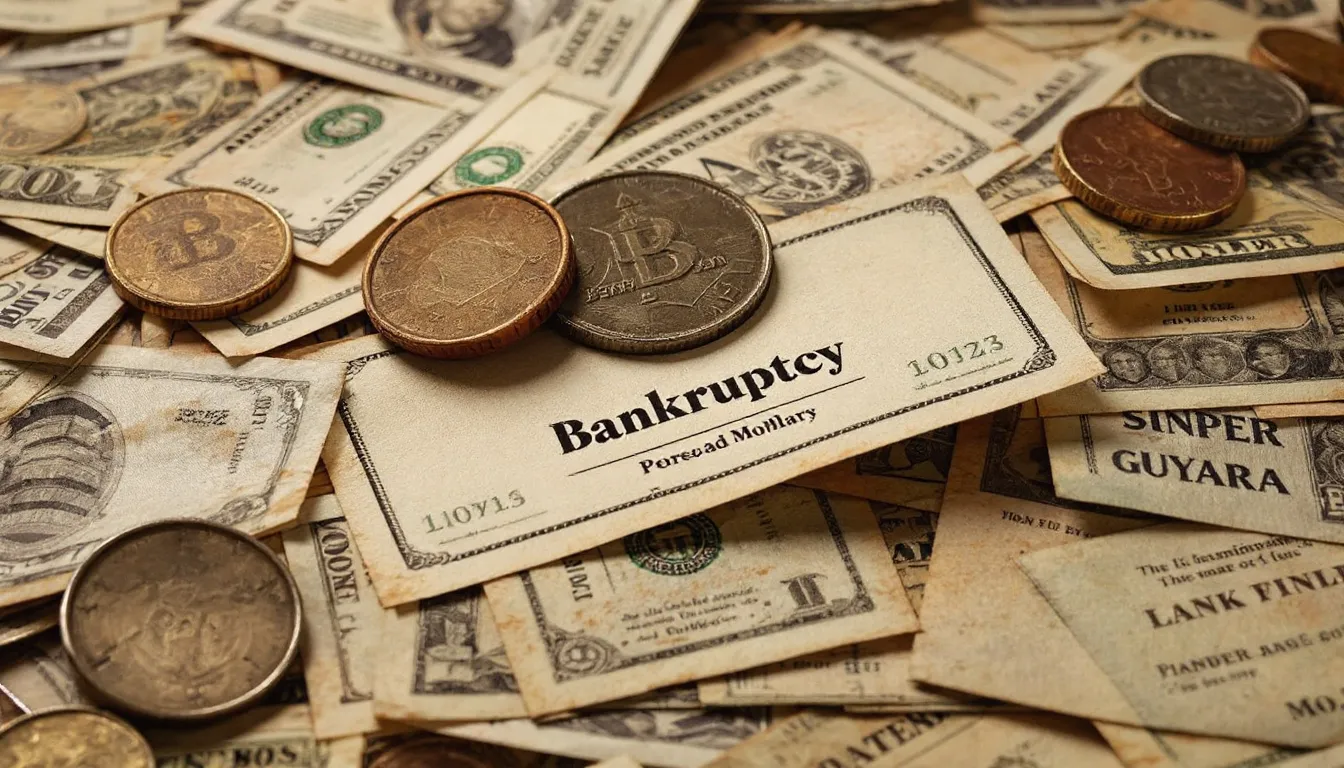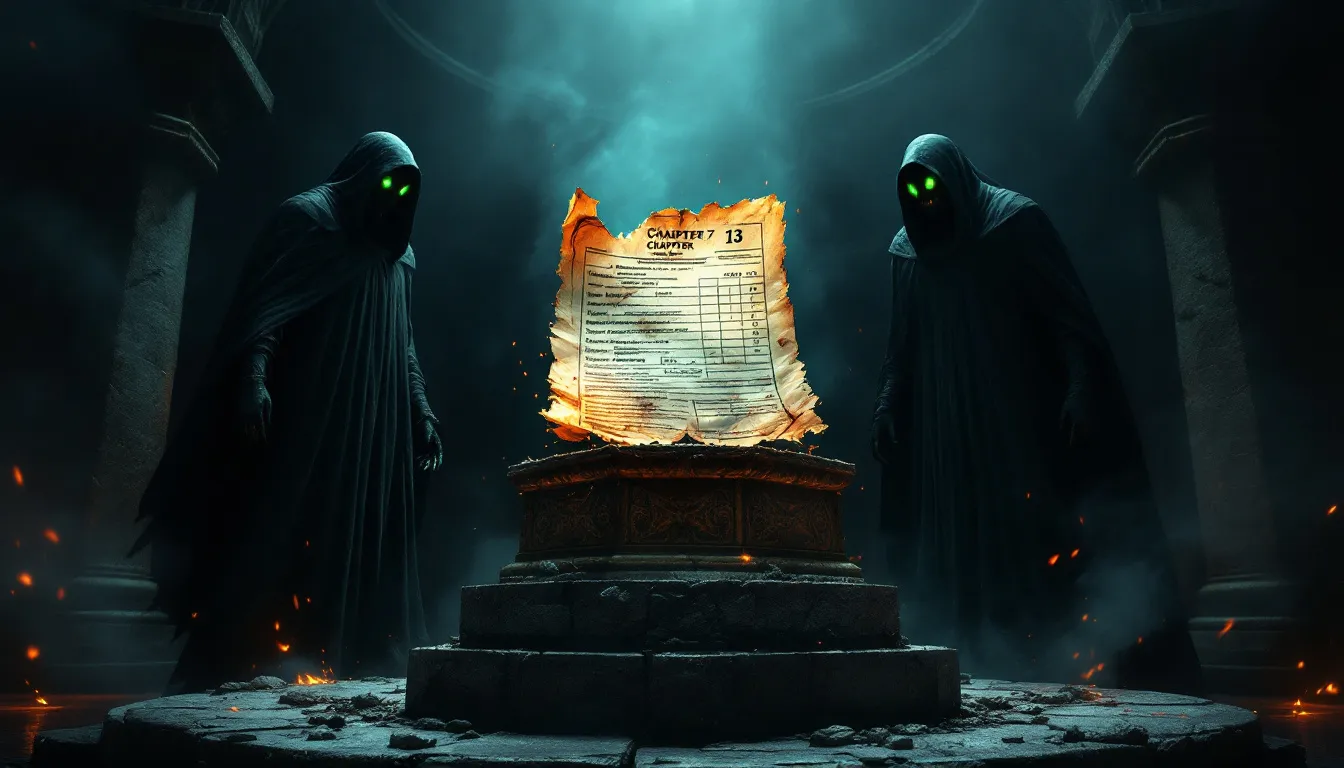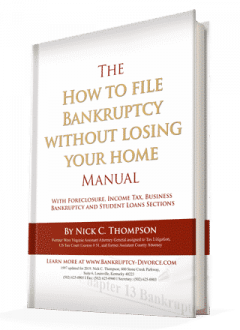Choosing between Chapter 7 and Chapter 13 bankruptcy can be challenging. Chapter 7 quickly eliminates unsecured debt quickly and cheaply. Chapter 13 allows you to rescue and keep assets. You can repay debt gradually and take years to catch up on your mortgage or tax debt with a Chapter 13. We will compare Chapter 7 vs 13 to help you decide which bankruptcy option is right for you.
Chapter 7 vs 13 Which Bankruptcy is Right for You: Takeaways
- Chapter 7 bankruptcy offers quick debt relief for unsecured debt such as credit card and medical bills. It can but rarely requires asset liquidation, making it suitable for individuals with minimal assets and low income seeking a debt discharge from overwhelming debt.
- Chapter 13 bankruptcy provides a structured repayment plan, allowing debtors to retain their property while managing secured and priority debts over a three to five-year period, ideal for those with steady income who need to catch up mortgage payments from disposable income.
- Eligibility for Chapter 7 and Chapter 13 differs. Chapter 7 requires passing a means test.
- Bankruptcy exemptions allow you to keep property. But if you exceed a bankruptcy exemption, you may be able to file as a 13 or deal with a Chapter 7 Trustee.
- If you fail the means test, you may be required to file a Chapter 13. The bankruptcy code requires Chapter 13 debtors to file a debt repayment plan. You can catch up on missed mortgage payments and secured property debts. First mortgage lenders cannot be stripped from their liens, but unsecured junior liens can often be stripped. A 13 has eligibility restrictions, disposable income problems, and adherence to specific debt limits.
Understanding the Goals and Outcomes of Chapter 7 and Chapter 13 Bankruptcy
Chapter 7 and Chapter 13 have different main goals and consequences. Each chapter has its own benefits and costs when filing for bankruptcy. Each type offers debt relief and an opportunity to restart financially, but they employ different approaches with different effects on secured debt, your assets and future finances.
Chapter 7: Cheap, Quick, Easy Debt Relief for Dischargeable Debts
Often known as “straight bankruptcy,” Chapter 7 aims to deliver swift debt relief by quickly discharging unsecured debt. Debtors who file Chapter 7 rarely have nonexempt property, but a 7 converts nonexempt property to pay creditors. Low-income debtors make less than the median income and easily pass the means test. They rarely have significant amounts of equity to interest a bankruptcy trustee.
The main benefit for many individuals filing under Chapter 7 is that it quickly and cheaply eliminates unsecured debt. If your credit is below 600, your credit report and FICO score often quickly increase. A 7 eliminates the need for a repayment plan that costs thousands more for debtors with higher incomes. Chapter 13 takes 12 times the amount of time to complete. Instead of 3 to 5 months, Chapter 13 takes 3-5 years. Chapter 13 has about a 30% failure rate. Although it is called a liquidation bankruptcy, Chapter 7 in our office only has less than a 1% failure rate, and people rarely lose property. Chapter 7 allows for most unsecured debts to be wiped clean, providing a faster and more affordable route toward financial stability. Certain debts such as alimony, student loans, and non-dischargeable debts due to fraud are not affected.
Your bankruptcy attorney fees are paid up front in a 7. And if you have over 51% business debt, business entities, individuals, and couples can file without passing the means test.
Chapter 13: Structured Repayment Plans and Wage Earners
Chapter 13 bankruptcy provides a mechanism for debtors to restructure their financial obligations while preserving ownership of their assets. It requires debtors to create a repayment plan to repay creditors over three to five years. It is especially advantageous for those with consistent earnings aiming to address past-due mortgage payments or administer various secured debts effectively.
Debtors commit to a repayment schedule that lasts between three and five years, wherein they make scheduled payments determined by the amount of income they have available after essential expenses. Often called a reorganization bankruptcy priority, secured creditors are paid up to date. Monthly payments from regular income are required. The automatic stay does not affect child support payments or collection. However, the payment to unsecured creditors can be lowered to take care of a tax lien, priority, or non-dischargeable debts.
Designed to assist individuals with greater incomes in orderly debt resolution, Chapter 13 facilitates the extended settlement of non-dischargeable liabilities, including specific tax-related debts. This offers a viable fiscal option for eligible candidates seeking relief over an elongated timeframe. Creditors, debtors, and property settlement debts from a divorce may have to tighten their belts to allow a bankruptcy reorganization to work.
Eligibility Requirements for Chapter 7 and Chapter 13 Bankruptcy
It is essential to ascertain whether you qualify for either Chapter 7 or Chapter 13 bankruptcy as an initial step in the bankruptcy procedure. Both forms have distinct qualifying criteria that match your financial circumstances with the suitable type of bankruptcy.
Qualifying for Chapter 7 Bankruptcy
To be eligible for Chapter 7 bankruptcy, you must pass the means test. This assessment measures your disposable income against the median income in your state to determine qualification. If your income falls below this benchmark, you might qualify for Chapter 7. You can also deduct reasonable and necessary monthly expenses from your income, which could affect whether or not you meet the criteria.
If you do not pass the means test, it may lead to either the dismissal of your case or the conversion into a Chapter 13 bankruptcy filing.
Qualifying for Chapter 13 Bankruptcy
To file for Chapter 13 bankruptcy, an individual must have a consistent income to back a carefully devised repayment plan. There are also established debt ceilings that one has to observe: Unsecured debt is capped at $383,175, and secured debt should not exceed $1,580,125 for 2025.
These thresholds are in place so that Chapter 13 bankruptcy remains accessible only to those who can feasibly maintain their repayment obligations over the course of several years.
Types of Debts Addressed in Chapter 7 and Chapter 13 Bankruptcy
Plan payments may allow you to catch up on car payments or pay nondischargeable debts at the expense of unsecured debt. You can sell nonexempt property to pay qualifying debts or pay debts from household income in a 13. Your current monthly income and disposable income primarily fund a Chapter 13. If the play repays what a Chapter 7 would have, you can keep nonexempt assets in a 13.
Chapter 7 bankruptcy offers a direct route to debt relief by wiping out non-priority unsecured debts, which typically encompass medical bills, personal loans, and credit card balances. Unlike Chapter 13 bankruptcy, it does not require debtors to pay unsecured creditors. It is designed primarily to handle general unsecured debts and allows for their total discharge under its provisions.
Contributions owed to retirement or an employee benefit fund might be repayable in a plan, but they are not deductions from your budget.
Secured Debts in Chapter 13
Chapter 13 bankruptcy is designed to restructure secured debts, giving debtors the opportunity to make up for missed payments while keeping their assets intact. Chapter 13 can help reduce the principal loan balance of secured debts, offering more flexibility in adjusting the principal balance if certain requirements are met. It’s particularly useful when dealing with large commitments such as mortgages and auto loans. The repayment of a secured debt within Chapter 13 hinges on the nature of the debt itself, and maintaining adherence to an established repayment plan is critical for holding onto property that has been used as security, thereby enabling efficient payment toward creditors.
Employing this methodical approach under Chapter 13 serves as a protective measure against foreclosures and repossession attempts, providing individuals who have steady earnings with a more financially secure route forward. Debtors can thus better handle their financial responsibilities through reorganization without resorting to liquidating assets in bankruptcy proceedings.
Impact on Property and Assets
When weighing the options of Chapter 7 versus Chapter 13 bankruptcy, a primary consideration is how each form impacts your property and assets. The difference in the effect on assets between these two types of bankruptcy can shape your choice, depending on whether preserving property aligns with your financial objectives.
Retaining Property in Chapter 13
One of the key benefits of Chapter 13 bankruptcy is the ability to retain property while catching up on missed payments. This is particularly advantageous for homeowners facing foreclosure. Chapter 13 allows them to keep their home and pay off late payments over time. The repayment plan allows debtors to maintain their primary residence and other assets while reorganizing their debts.
Asset Liquidation in Chapter 7
Chapter 7 bankruptcy necessitates the selling off of nonexempt property in order to settle debts with creditors. The majority of individuals filing for this protection are able to safeguard their assets through exemptions, with a success rate exceeding 93% in fully securing their possessions. A debtor is often happy to give up a 10,000 car to liquidate 1,000,000 or more in debt.
The bankruptcy Trustee oversees the sale of any nonexempt assets and pays the generated funds among creditors. The particular exemptions available that determine what properties can be kept during a Chapter 7 case are governed by state-specific legislation.
Special Considerations for Specific Debts
Understanding the treatment of specific debts, such as tax obligations, student loans, and spousal support payments, is crucial when determining whether to file for Chapter 7 or Chapter 13 bankruptcy. These particular types of liabilities can significantly impact your decision on which chapter to choose for filing.
Managing Tax Debts
Tax debts are handled differently in Chapter 7 and Chapter 13 bankruptcies. Tax debts are treated differently from unsecured creditors in these bankruptcy chapters. In Chapter 7, some tax debts can be discharged if they meet specific criteria, such as being over three years old.
In Chapter 13, tax debts are repaid over time through structured plans, offering a manageable solution for significant tax obligations. The key difference lies in Chapter 7’s potential for discharge versus Chapter 13’s focus on repayment.
Dealing with Student Loans and Alimony
In the bankruptcy process, student loans and alimony require special consideration. It is not possible to discharge student loans unless one can show extreme hardship, a task that is notoriously hard to achieve. Obligations for alimony and child support are also non-dischargeable in both Chapter 7 or Chapter 13 bankruptcies.
As a result of their non-dischargeability, these obligations need to be handled separately from the bankruptcy proceedings. This necessitates meticulous planning and thoughtful deliberation.
Filing Process and Costs
Understanding the process of filing for bankruptcy and its related expenses is essential when contemplating such a significant financial step. Being aware of the necessary procedures and potential costs can assist in getting ready for this important choice.
Pre-Bankruptcy Counseling and Education
Individuals must complete credit counseling from an approved agency before filing for bankruptcy. This mandatory step ensures that debtors understand their financial situation and explore all available options.
After filing, individuals must complete a debtor education course to better manage their finances and avoid future difficulties.
Attorney Fees and Court Costs
The costs associated with filing for bankruptcy include both attorney fees and court fees. Chapter 7 attorney fees typically range from $1,500 to $3,500, paid upfront, while Chapter 13 attorney fees are higher, averaging between $4,500 and $5,500, but included in the repayment plan. The court fees for Chapter 7 bankruptcy amount to $338. In contrast, the fees for Chapter 13 bankruptcy are set at $313.
The bankruptcy court reviews and approves attorney fees in Chapter 13 to ensure they are reasonable.
Long-Term Effects on Credit
When determining which form of bankruptcy to choose, it is critical to take into account the enduring impact on your credit. The influence that each variety has on your credit rating and capacity for borrowing varies.
How Chapter 7 Affects Your Credit
A Chapter 7 bankruptcy can stay on your credit report for a decade. But it is stale information and not relevant to your credit score after a short period of time. A foreclosure is far worse. Bankruptcy can lead to short term difficulty to borrow for a home for 2 years. A foreclosure will bar you from a home mortgage for 3 to 7 years. It isn’t forever; people can often buy a car or home during or shortly after bankruptcy.
Rebuilding Credit After Chapter 13
To reconstruct your credit following a Chapter 13, it is crucial to maintain monthly payments on time. Make a budget and refrain from new lines of credit unless it is a home or car.
The organized approach to repaying debt provided by the Chapter 13 repayment strategy shows fiscal reliability that creditors often view favorably. Debtors can often buy a home or car while they are in a Chapter 13.
Choosing Between Chapter 7 and Chapter 13
When to Opt for Chapter 7
For individuals with limited assets and low income who are seeking a swift resolution to eradicate debt. It provides a cheap, quick, easy, and streamlined route towards eliminating debt.
When to Choose Chapter 13
For those with a steady income who can repay in part their debt obligations without sacrificing their assets. Chapter 13 offers a safe optimal solution. It proves especially advantageous for handling past-due mortgage payments and averting the loss of one’s home through foreclosure by offering a well-organized schedule for repaying debts over a longer duration.
Summary
While Chapter 7 provides rapid debt relief by liquidating assets, it’s best suited to individuals with limited assets and lower income levels. On the other hand, Chapter 13 introduces a repayment plan that permits debtors to retain their property while systematically managing their debts over an extended period. The decision to opt for one over the other hinges primarily on your income and assets. cumstances, consistent income flow, and specific indebtedness responsibilities. Engaging an experienced bankruptcy attorney can offer tailored advice and assist you in determining which option will most effectively help you reclaim fiscal stability.
Frequently Asked Questions
What is the main difference between Chapter 7 and Chapter 13 bankruptcy?
The key difference between Chapter 7 and Chapter 13 bankruptcy lies in how they handle debt. While Chapter 7 quickly eliminates unsecured debts, Chapter 13 allows individuals to keep their property by establishing a three- to five-year repayment plan.
Can I keep my home if I file for Chapter 7 bankruptcy?
You may be able to keep your home if you file for Chapter 7 bankruptcy, provided that your home equity falls within your state’s exemption limits. If your equity exceeds these limits, your home could potentially be liquidated.
What types of debts are not dischargeable in bankruptcy?
Certain debts, including recent tax debts, student loans (unless undue hardship is proven in an adversary), and alimony or child support, are typically not dischargeable in bankruptcy.
What are the costs associated with filing for bankruptcy?
When considering bankruptcy, it is important to take into account various incurred expenses such as attorney fees and court fees. The total for Chapter 7 filing costs comes to $338, while the range of attorney fees lies between $1,500 and $3,500. Filing for Chapter 13 incurs a fee of $313, with average lawyer being paid by the court between $4,500 and $6,000 over time through a structured repayment plan.
.





